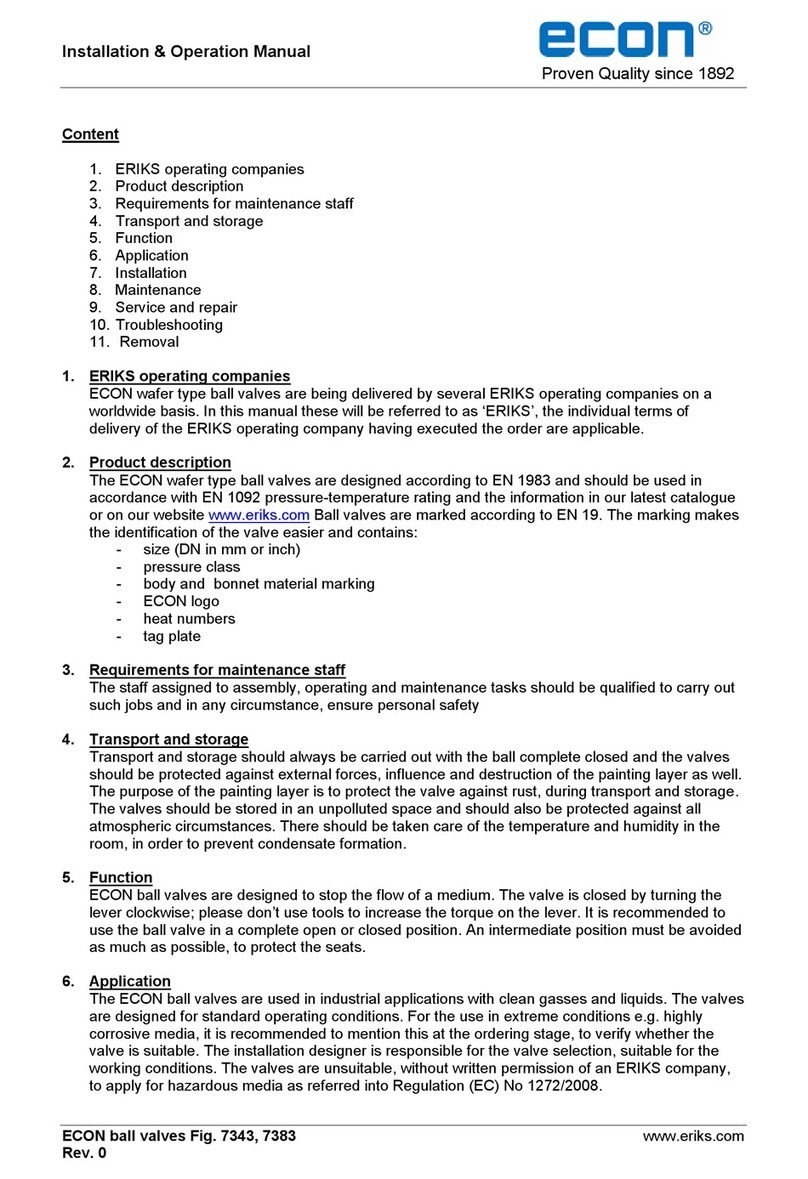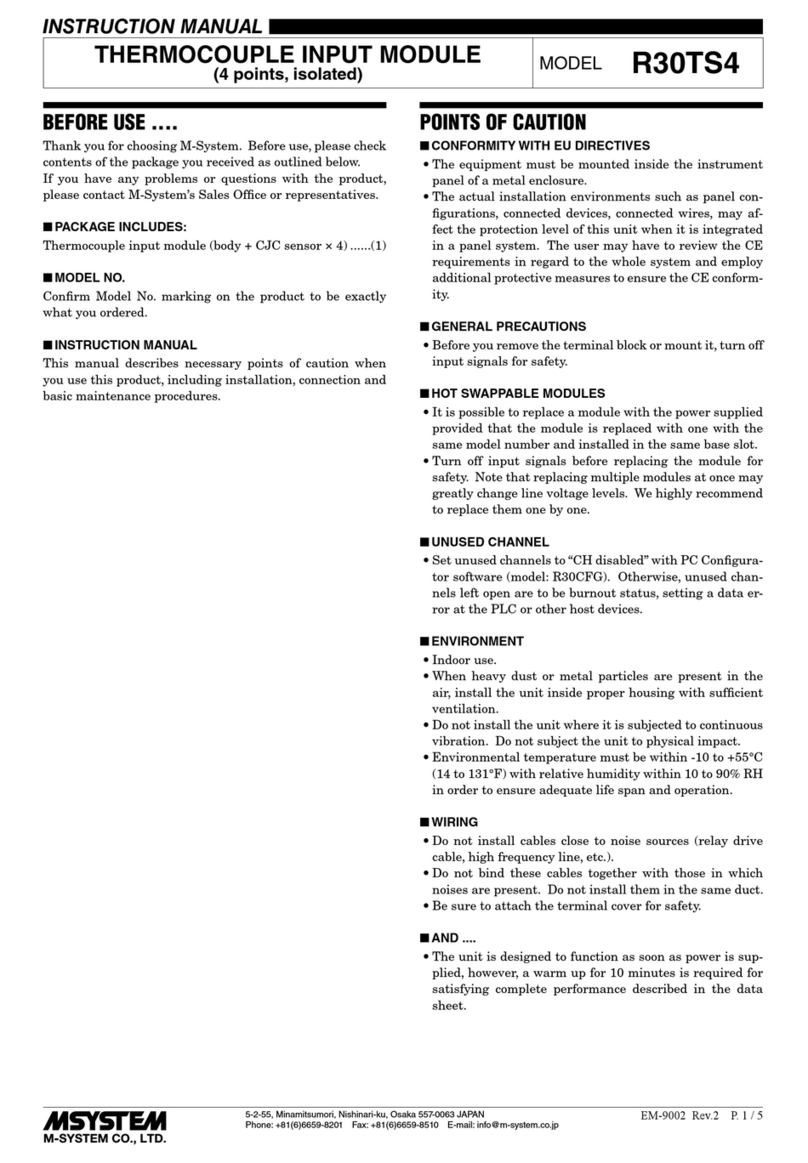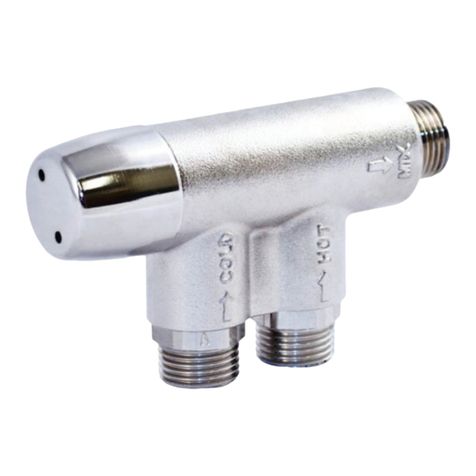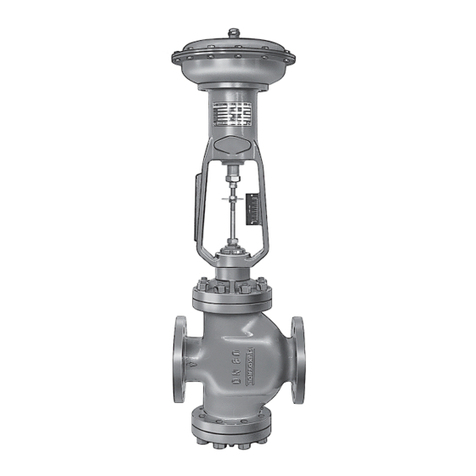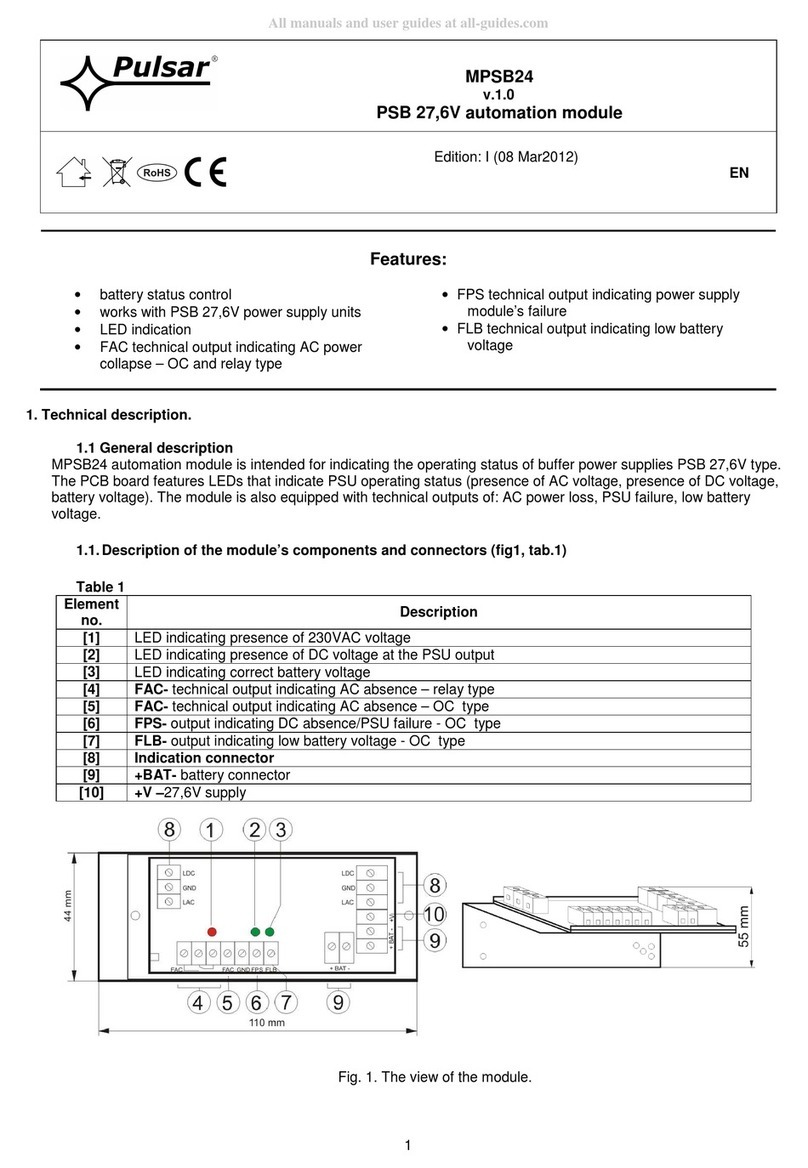Protector AS-5020.3 User manual

AS-5020.3
BETRIEBSANLEITUNG
OPERATING INSTRUCTIONS
MODE D’EMPLOI
GEBRUIKSAANWIJZING
AS-5020-3_I-Manual_150x180_Fin7.indd 1 08.09.15 11:47

AS-5020 | DEUTSCH
2
U
Sie können den Fenster-Sender und das Magnet-
gehäuse wahlweise mit beigefügten Klebepads oder
Schrauben befestigen.
Bei Verwendung von einem oder mehreren
Unterlegteilen beim Magnetgehäuse, z.B. zum
Ausgleich von Fensterrahmen, empfehlen wir
den Fenster-Sender und das Magnetgehäuse mit
Schrauben zu befestigen, um ein versehentliches
Abfallen zu vermeiden.
23
FENSTER-SENDER
U
3c
3b
3a
AS-5020-3_I-Manual_150x180_Fin7.indd 2 08.09.15 11:47

DEUTSCH | AS-5020
3
1
S
7
6
5
4
EMPFÄNGER
AS-5020-3_I-Manual_150x180_Fin7.indd 3 08.09.15 11:47

AS-5020 | DEUTSCH
4
Dadurch lassen sich z.B. die Energiekosten für Heiz- oder
Klimageräte deutlich senken.
ACHTUNG: Der Rollladen muss bei Benutzung dieses
Gerätes als Abluftsteuerung geöffnet sein, da sonst nicht
genug Frischluft nachströmen kann!
LEGENDE
1 Schiebeschalter Wirkrichtung
2 Fenster-Sender
3 Magnet für Fenster-Sender
4 Test-Taste Test/Codierung
5 Netz-LED
6 LED Gerät Zustand EIN
7 LED Gerät Zustand AUS
S Umstecksicherung
U Unterlegteile
EINSATZ ZUSÄTZLICHER SENDER (MAX. 8 STÜCK)
Das Gerät ist durch mehrere Fenster-Sender erweiterbar,
wodurch die Abzugshaube nicht mehr nur an ein einzelnes
Fenster gebunden ist. Jeder einzelne Fenster-Sender kann
das Abluftgerät freigeben.
FUNKTIONS-WAHLSCHALTER
Mit dem Schiebeschalter (1) am Empfänger können Sie
zwischen zwei Funktionen (Wirkrichtungen) wählen. In der
Schalterposition (OFFEN) wird das angeschlossene Gerät
bei geöffnetem Fenster eingeschaltet (z.B. beim Einsatz als
Abluftsteuerung). In der Schalterposition (GESCHLOSSEN)
schaltet bei geöffnetem Fenster das angeschlossene Gerät
aus (z.B. Klimaanlage, Heizgerät).
Montage- und Betriebsanleitung für die
Abluftsteuerung Modell AS-5020.3 (Funkversion)
Wir danken Ihnen für den Kauf der
PROTECTOR Funk-Abluftsteuerung AS-5020.3.
EINLEITUNG
Die Bedienungsanleitung ist Bestandteil dieses Gerätes. Sie
enthält wichtige Hinweise für Sicherheit, Gebrauch und Ent-
sorgung. Machen Sie sich vor der Benutzung des Gerätes mit
allen Bedien- und Sicherheitshinweisen vertraut. Benutzen
Sie das nur wie beschrieben und für die angegebenen Ein-
satzbereiche. Händigen Sie alle Unterlagen bei Weitergabe
des Gerätes an Dritte aus.
ALLGEMEINES
Sie können dieses Gerät als Abluftsteuergerät einsetzen,
welches als Hilfsmittel zur Überwachung der Frischluftzufuhr
bei Inbetriebnahme eines Abluftgerätes (Dunstabzugshau-
be, Ventilator, etc...) dient. Die Selbstüberwachung zur
Sicherstellung der Frischluftzufuhr kann hiermit nicht ersetzt,
sondern nur unterstützt werden. Dieses Gerät schaltet das
Abluftsystem nur dann ein, wenn ein Druckausgleich durch
Öffnen eines Fensters oder einer Tür erfolgt. Damit kann die
zusätzlich nachströmende Frischluft aus dem Außenbereich
angesaugt werden.
Außerdem können Sie mit diesem Gerät auch wahlweise
Geräte oder Leuchten EIN oder AUS schalten, wenn z.B. eine
Tür oder ein Fenster geschlossen oder geöffnet wird.
AS-5020-3_I-Manual_150x180_Fin7.indd 4 08.09.15 11:47

DEUTSCH | AS-5020
5
HINWEIS: Solange der Empfänger in der Steckdose steckt,
ist ein Umschalten nicht möglich. Um die Wirkrichtung um-
zukehren, muss der Empfänger aus der Steckdose gezogen,
Schalter geschaltet und anschließend wieder in die Steckdose
gesteckt werden.
MONTAGE DES EMPFÄNGERS
Stecken Sie den Empfänger der AS-5020.3 in eine Steckdose.
Stecken Sie das zu schaltende Gerät in die Steckdose des
Empfängers und schrauben Sie die Umstecksicherung (S)
auf. Sobald LED „NETZ“ (5) am Empfänger leuchtet ist
dieser betriebsbereit.
Hinweis: Der Empfänger sollte nicht hinter einer Metall-
Verkleidung montiert werden, hierdurch kann die Reichweite
eingeschränkt werden.
ACHTUNG: Prüfen Sie immer, ob die Leistungsaufnahme
des angeschlossenen Gerätes kleiner oder gleich der
Schaltleistung ist.
MONTAGE DES SENDERS
Vorbereitung
Fenster-Sender (2) und Magnet (3) an dem oberen
Fensterrahmen und dem Fensterflügel so montieren, dass
der allseitige Abstand der beiden Gehäuseteile kleiner 7
mm ist. Zum Anpassen hierzu die beigefügten Unterlegteile
verwenden (U).
Hinweis: Achten Sie darauf, die Batterie des Senders auf
die Metalllasche zu legen und nicht darunter zu schieben.
1. Das Gehäuseunterteil des Fenster-Senders an der
vorgesehenen Stelle mit dem beigelegten
doppelseitigen Klebepad montieren.
! Alternativ befindet sich ein vorbereitetes Loch im
Gehäuseunterteil, durch welches der Fenster-Sender am
Fensterrahmen festgeschraubt werden kann. Entfernen
Sie dazu vorsichtig die Platine vom Gehäuseunterteil
und schrauben das Gehäuse mit der beigefügten Schrau-
be fest. Setzen Sie danach die Platine wieder zurück.
2. Gehäuseoberteil auf das Gehäuseunterteil aufdrücken.
3. Magnet-Gehäuseunterteil an der vorgesehenen Stelle
mit dem beigelegten Klebepad montieren.
ACHTUNG: Der Abstand zwischen Sender und dem
Magneten darf 7 mm nicht überschreiten!
4. Magnet einlegen und mit dem Gehäuseoberteil
verschließen.
MINDESTÖFFNUNG DES FENSTERS
Diese richtet sich nach:
a. Der Leistung des Abluftgerätes in m3/h
b. Nach der Größe des zu öffnenden Fensters in m2.
c. Nach der Größe des Öffnungsspalts am Fenster in cm
(siehe Tabelle 1)
In den meisten Küchen sind rechteckige Kipp-Schwenkfenster
eingebaut. Sollte es sich bei dem Fenster um ein z.B. rundes
Format handeln, fragen Sie bitte den Installateur und
Heizungsbauer oder Elektroinstallateur nach der Berechnung
der Mindestöffnung. Die erforderliche Mindestöffnung des
rechteckigen Fensters ist als Beispiel in der Tabelle für Kipp-
Schwenkstellung ersichtlich.
AS-5020-3_I-Manual_150x180_Fin7.indd 5 08.09.15 11:47

AS-5020 | DEUTSCH
6
5. Unterschreitet die Spaltgröße des Fensters den zuläs-
sigen Wert für das Spalt-Öffnungsmaß entsprechend
der Tabelle, so kann das Fenster eventuell nur in
der Schwenkposition das erforderliche Öffnungsmaß
erreichen. Auch in der Schwenkposition muss eine
Mindestspaltgröße erreicht werden. Der Fenster-Sender
muss so angebracht sein, dass die Mindestspaltgröße
gesichert ist. Wir empfehlen, die Mindestspaltgröße mit
Hilfe eines Abstandhalters zu fixieren.
1. Ermitteln Sie die Abluftluftleistung Ihres Abluftgerätes in
m3/h. Sie finden die Abluftluftleistung auf dem Typen-
schild oder in der Betriebsanleitung Ihres Abluftgerätes
(z. B. Dunstabzugshaube).
2. Messen Sie die innere Breite und Höhe des Fensters und
errechnen Sie die Fenstergröße in m2. (Breite x Höhe =
m2; z. B. 0,8 m x 1,0 m = 0,8m2) = Fenstergröße
3. Bestimmen Sie anhand der Tabelle aus der Abluftluft-
leistung und der Fenstergröße das Spalt-Öffnungsmaß
(Mindestspaltöffnung Ihres Fensters).
4. Messen Sie in der Kippstellung die obere innere Fenster-
Spaltgröße in cm. Die Spaltgröße Ihres Fensters darf das
ermittelte Spalt-Öffnungsmaß nicht unterschreiten! Eine
größere Spalt- oder Fensteröffnung ist von Vorteil.
Berechnungstabelle zur Bestimmung der Mindestspaltöffnung Ihres Fensters
AS-5020-3_I-Manual_150x180_Fin7.indd 6 08.09.15 11:48

DEUTSCH | AS-5020
7
3. Aktivieren Sie den SENDER, indem Sie den Magnet
einmal an das Gehäuse halten und wieder entfernen.
Am EMPFÄNGER endet das blinken der LED „ AUS“ (7)
und der Anlernvorgang wird abgeschlossen.
4. Wiederholen Sie die Schritte 1), 2) und 3) für jeden
einzelnen Sender.
5. Sind max. 8 SENDER angelernt, können keine weiteren
hinzugefügt werden.
Einzelne oder alle SENDER LÖSCHEN (MAX. 8 STÜCK)
Einzelnen SENDER löschen
1. Drücken Sie am Empfänger den Taster (4) für
2 Sekunden. Die LED „AUS“ (7) fängt an zu blinken.
2. Aktivieren Sie den zu löschenden SENDER, indem Sie
den Magnet einmal an das Gehäuse halten und wieder
entfernen. Am EMPFÄNGER endet das blinken der LED
„AUS“ (7) und der Löschvorgang wird abgeschlossen.
Alle SENDER löschen
1. Drücken Sie am Empfänger den Taster (4) für
2 Sekunden. Die LED „AUS“ (7) fängt an zu blinken.
2. Drücken Sie erneut den Taster (4) für 2 Sekunden. Am
EMPFÄNGER endet das blinken der LED „AUS“ (7) und
der Löschvorgang für alle SENDER wird abgeschlossen.
FUNKTIONSPRÜFUNG
Bei Schalterposition (OFFEN):
1. Abluftgerät EINschalten und das Fenster öffnen >
Abluftgerät muss anlaufen.
2. Fenster schließen > Abluftgerät muss abschalten.
CODIERUNG ABLUFTSTEUERUNG
Der Fenster-Sender ist werkseitig nicht codiert und muss
bei der ersten Inbetriebnahme an den Empfänger
angelernt werden.
Bitte Reihenfolge genau einhalten!
1. Stecken Sie den Stecker des zu schaltenden Gerätes (z.B.
Dunstabzugshaube) in den EMPFÄNGER, und montieren
die Umstecksicherung (S).
HINWEIS: Ohne die Umstecksicherung (S) ist keine
Funktion gegeben.
2. Danach stecken Sie den EMPFÄNGER in eine Netz-
Steckdose. Die LED „NETZ“ (5) leuchtet, bei ordnungsge-
mäßer Funktion des EMPFÄNGERS, gelb auf.
3. Am EMPFÄNGER den Taster (4) für 2 Sekunden gedrückt
halten, bis die rote LED „AUS“ (7) anfängt zu blinken.
4. Legen Sie im Fenster-SENDER die Batterie (CR 2477)
ein. Die LED am Sender leuchtet kurz auf.
5. Aktivieren Sie den Fenster-SENDER, indem Sie den
Magnet einmal an das Gehäuse halten und wieder
entfernen. Die im Sender eingebaute LED leuchtet auf.
Am EMPFÄNGER endet das blinken der LED „AUS“ (7)
und der Anlernvorgang wird abgeschlossen.
6. Jetzt ist der SENDER am EMPFÄNGER angelernt und die
AS-5020.3 ist einsatzbereit.
MEHRERE SENDER ANLERNEN (MAX. 8 STÜCK)
1. Drücken Sie am Empfänger den Taster (4) für
2 Sekunden. Die LED „AUS“ (7) fängt an zu blinken.
2. Legen Sie eine Batterie (CR 2477) in den einzuler-
nenden SENDER ein.
AS-5020-3_I-Manual_150x180_Fin7.indd 7 08.09.15 11:48

AS-5020 | DEUTSCH
8
keine unbefugten Veränderungen oder versuchte Reparaturen
vorgenommen wurden. Ihre gesetzlichen Rechte als Kunde
werden in keiner Weise durch diese Garantie beeinträchtigt.
Bitte beachten Sie!
Es besteht kein Anspruch auf Garantie
in u. a. folgenden Fällen:
•Bedienungsfehler
•leere Batterien oder defekte Akkus
•falsche Codierung/Kanalwahl
•Störungen durch andere Funkanlagen (z.B. Handybetrieb)
•Fremdeingriffe/-wirkungen
•Mechanische Beschädigungen
•Feuchtigkeitsschäden
•Kein Garantie-Nachweis (Kaufbeleg)
Haftungsbeschränkung:
Der Hersteller ist nicht für den Verlust oder die Beschädigung
irgendwelcher Art einschließlich der beiläufigen oder Folge-
schäden haftbar, die direkt oder indirekt aus der Störung
dieses Produktes resultieren.
Änderungen ohne Ankündigung vorbehalten. Im Rahmen
unserer Produktpflege und Geräteoptimierung kann der
Inhalt von den Verpackungsangaben abweichen.
Sicherheitshinweise
Bei Schäden, die durch Nichtbeachten dieser Bedienungsan-
leitung verursacht werden, erlischt der Garantieanspruch. Für
Folgeschäden übernehmen wir keine Haftung! Bei Sach- oder
Personenschäden, die durch unsachgemäße Handhabung
oder Nichtbeachten der Sicherheits-
hinweise verursacht werden, übernehmen wir keine Haftung.
In solchen Fällen erlischt jeder Garantieanspruch!
Verwenden Sie dieses Produkt nicht in Krankenhäusern
Bei Schalterposition (GESCHLOSSEN):
1. Angeschlossenes Gerät EINschalten und das Fenster
öffnen > Das angeschlossene Gerät muss abschalten.
2. Fenster schließen > das angeschlossene Gerät
muss einschalten.
FEHLFUNKTIONEN
In Einzelfällen kann es durch Überschneidung mit anderen,
ähnlichen Funkgeräten zu Fehlfunktionen kommen. Im Nor-
malfall reicht es, wenn Sie die Platzierung der Komponenten
überprüfen und ggf. verändern.
TECHNISCHE DATEN
Netzspannung: 230 V ~ , 50/60 Hz, ca. 1 W
Schaltleistung: 1800 W / 8A bei cos Phi =1
Funk-Reichweite: bis 50 m
Frequenz: 433,92 MHz
Schutzklasse: IP 20 nur für trockene Räume
Batterie (Sender): 1 x 3V Lithium Typ CR 2477
(Lebensdauer ca. 2 Jahre)
Keine eigenen Reparaturversuche durchführen!
2 JAHRE BESCHRÄNKTE GARANTIE
Es wird für die Dauer von 2 Jahren ab Kaufdatum gewährlei-
stet, dass dieses Produkt frei von Defekten in den Materialien
und in der Ausführung ist. Dies trifft nur zu, wenn das Gerät
in üblicher Weise benutzt wird und regelmäßig instandge-
halten wird. Die Verpflichtungen dieser Garantie werden auf
die Reparatur oder den Wiedereinbau irgendeines Teils des
Gerätes begrenzt und gelten nur unter der Bedingung, dass
AS-5020-3_I-Manual_150x180_Fin7.indd 8 08.09.15 11:48

DEUTSCH | AS-5020
9
oder sonstigen medizinischen Einrichtungen. Obwohl dieses
System nur relativ schwache Funksignale aussendet, könnten
diese dort zu Funktionsstörungen von lebenserhaltenden
Systemen führen. Gleiches gilt möglicherweise in anderen
Bereichen.
Aus Sicherheits- und Zulassungsgründen (CE) ist das
eigenmächtige Umbauen und/oder Verändern des Produkts
nicht gestattet.
Zerlegen Sie das Produkt nicht! Es besteht die Gefahr
eines lebensgefährlichen elektrischen Schlages! Lassen Sie
das Verpackungsmaterial nicht achtlos liegen, Plastikfolien/-
tüten, Styroporteile, etc., könnten für Kinder zu einem
gefährlichen Spielzeug werden.
Das Gerät ist nur für trockene Innenräume geeignet (keine
Badezimmer o.ä. Feuchträume). Vermeiden Sie das Feucht-
oder Nasswerden des Geräts.
Wenden Sie sich an eine Fachkraft, wenn Sie Zweifel über
die Arbeitsweise, die Sicherheit oder den Anschluss des
Geräts haben. Gehen Sie vorsichtig mit dem Produkt um
- durch Stöße, Schläge oder dem Fall aus bereits geringer
Höhe wird es beschädigt.
DE
Diese Bedienungsanleitung ist eine Publikation
der Protector GmbH, An den Kolonaten 37,
26160 Bad Zwischenahn
Diese Bedienungsanleitung entspricht dem technischen
Stand bei Drucklegung. Änderung in Technik und Ausstattung
vorbehalten.
AS-5020-3_I-Manual_150x180_Fin7.indd 9 08.09.15 11:48

AS-5020 | ENGLISH
10
U
23
TRANSMITTER WINDOW You can fix the window transmitter and the magnet
housing with included adhesive pads or screws.
When using one or more washers at the magnet
housing, e.g. for compensating window frames, we
recommend the window transmitter and the magnet
housing to be fastened with screws to avoid an
unwanted falling off. See drawing.
U
3c
3b
3a
AS-5020-3_I-Manual_150x180_Fin7.indd 10 08.09.15 11:48

ENGLISH | AS-5020
11
1
S
7
6
5
4
RECEIVER
AS-5020-3_I-Manual_150x180_Fin7.indd 11 08.09.15 11:48

AS-5020 | ENGLISH
12
5 Power LED
6 LED device status on
7 LED device status off
S Tamper-proof plug guard
U Washers
USE OF ADDITIONAL TRANSMITTERS
(MAX. 8 DEVICES)
The device functionality can be extended by adding more
transmitters (window contacts) with the result that the
extractor hood is not limited to a single window only. Each
individual transmitter can activate the exhaust air device.
FUNCTION SELECTOR SWITCH
You can select two functions (effective directions) with
the sliding switch (1) of the receiver. In the (OPEN) switch
position, the connected device is activated when a window
is opened (e.g. for exhaust air control use). In the (CLOSE)
switch position, the connected device (e.g. air-conditioner,
heater) switches off when a window is opened.
NOTE: As long as the receiver is plugged into the wall
socket, a switching is not possible. To reverse the effective
direction, the receiver must be removed from the socket, the
switch be slid and the receiver be replaced into the socket.
RECEIVER INSTALLATION
Plug the AS 5020.3 receiver into a socket. Plug the device
to be switched into the receiver socket and screw on the
additional fuse (S). The power LED on the receiver is now on
and the receiver is ready for use.
Assembly and operating instructions for an
exhaust air controller Model AS-5020.3 (radio
version)
Thank you for purchasing the PROTECTOR
AS-5020.3 Exhaust Air Controller.
GENERAL
This device can be used as an exhaust air control device,
as an aid to monitor fresh air supply when commissioning
an exhaust air device (fume extractor hood, fan etc…).This
cannot replace self-monitoring to ensure fresh air supply, but
it can be supportive. This device only activates the exhaust
air system in the event of pressure equalisation when a
window or door is opened. The additional fresh air streaming
in can thus be drawn in from the outside.
You can also use this device to selectively switch devices or
lamps ON or OFF, for instance when a door or a window is
closed or opened. This, for example, enables significant red-
uction of energy costs for heating or air-conditioning devices.
ATTENTION: When using this device for exhaust air control,
the shutter must be open to ensure adequate inflow of
fresh air!
KEY
1 Sliding switch
2 Transmitter (window)
3 Magnet for window transmitter
4 Test/Code button
AS-5020-3_I-Manual_150x180_Fin7.indd 12 08.09.15 11:48

ENGLISH | AS-5020
13
Assembly instructions for window contact
Minimum window opening
These are based on:
a) The power of the exhaust air device in m³/h
b) The size of the window to be opened in m²
c) The size of the window opening in cm (see table 1)
Most kitchens have rectangular tilt and pivot windows.
If your window is round for example, please ask the
installation and heating engineers or electrician to calculate
the minimum opening.
The minimum opening of rectangular windows is shown as
an example in the table for the tilt and pivot position.
Calculation table to determine the minimum
opening of your window
1. Determine the extraction power of your exhaust air
extraction device unit in m³/h. You can find the exhaust
air extraction power on the identification plate or in the
operating instructions of your exhaust air device (e.g.
extractor hood).
2. Measure the inner width and height of the window and
calculate the window size in m².
(width x height = m²; e.g. 0.8 m x 1.0 m = 0.8 m²) =
window size
3. Using the table, work out the opening size (minimum
opening for your window) from the extraction power and
window size.
4. While the window is in the titled position, measure the
upper inner gap size of the window in cm. The gap size
of your window must not be below the opening size
calculated! The bigger the gap or window opening,
the better.
Note: The receiver should not be mounted behind a metal
covering because this can limit the range.
ATTENTION: Always check that the power rating of the con-
nected device is less than or equal to the switching capacity.
TRANSMITTER INSTALLATION
Preparation
Mount transmitter (2) and magnet (3) on the upper window
frame and the window sash in such a way that the distance
between the two housing components is less than 7 mm.
Use the supplied washers (U) for adjustment.
Note: Please put the transmitter battery on the metal flap,
do not slide it under the flap.
1. Mount the transmitter housing base at the determined
position, using the supplied double-sided adhesive pad.
!Alternatively, there is a blanked hole in the bottom of
the housing. Remove the circuit board from the bottom
of the housing and carefully break open the hole. Use
the hole to screw the transmitter to the window frame.
Then replace the circuit board.
2. Press the upper part of the housing onto its base.
3. Mount the magnet housing bottom in the determined
position, using the supplied adhesive pad.
ATTENTION: The distance between the transmitter
and the magnet must not exceed 7 mm!
4. Insert magnet and close with the housing cover.
AS-5020-3_I-Manual_150x180_Fin7.indd 13 08.09.15 11:48

AS-5020 | ENGLISH
14
NOTE: Without the tamper-proof plug guard (S) the
equipment does not function.
2. Next insert the RECEIVER into a mains electrical socket. If
the RECEIVER is working correctly, the POWER LED lights
up yellow.
3. Press and hold the sensor (4) on the RECEIVER for 2
seconds, until the red CLOSED LED begins to blink.
4. Insert the battery (CR 2477) into the TRANSMITTER. The
LED lights up briefly.
5. Activate the TRANSMITTER by holding the magnet
against the housing once and then removing it. The LED
built into the transmitter lights up. The POWER LED on
the RECEIVER stops blinking and the tuning-in procedure
is completed.
6. Now the TRANSMITTER is tuned in to the RECEIVER and
the AS-5020.3 is ready for use.
5. If the gap size of the window is less than the permissible
value for the opening size according to the table, the
window may only be able to achieve the required
opening size in the pivot position. There must also be a
minimum gap when the window is in the pivoted posi-
tion. The window contact shall be positioned in such a
way as to ensure the minimum gap size. We recommend
you ensure the minimum gap size using a spacer.
CODING BETWEEN TRANSMITTER AND RECEIVER
The transmitter is not factory encoded and must be trained
on the receiver when first operated.
Please follow sequence exactly!
1. Insert the plug of the device to be switched on (e.g.
fume extractor hood) into the RECEIVER, and mount the
tamper-proof plug guard (S).
AS-5020-3_I-Manual_150x180_Fin7.indd 14 08.09.15 11:48

ENGLISH | AS-5020
15
FUNCTIONAL TEST
With (OPEN) switch position:
1. Switch exhaust air device ON and open the window >
exhaust air device must switch on.
2. Close the window > exhaust air device must switch off.
With (CLOSE) switch position:
1. Switch connected device ON and open the window >
the connected device must switch off.
2. Close the window > the connected device
must switch on.
MALFUNCTIONS
In individual cases cross-over with other similar radio devices
can cause malfunctions. In the normal case it is sufficient to
check the positioning of the components and if necessary,
to modify this.
TECHNICAL DATA
Mains voltage: 230 V ~, 50/60 Hz,
approx. 1 W
Mains switching capacity: 1800 W / 8A, at cos phi = 1
Radio range up to: 50 m
Frequency: 433.92 Mhz
Protection class: IP 20 * only for dry rooms
Batterie (transmitter): 1 x 3V Lithium Typ CR 2477
(lifetime approx. 2 years)
Never carry out repairs yourself!
TUNING IN MORE THAN ONE TRANSMITTER
(MAX. 8 DEVICES)
1. Press and hold the sensor (4) on the Receiver
for 2 seconds. The CLOSED LED (5) begins to blink.
2. Insert a battery (CR 2477) into the TRANSMITTER
to be tuned in.
3. Activate the TRANSMITTER by holding the magnet
against the housing once and then removing it. The
POWER LED on the RECEIVER stops blinking and the
tuning-in procedure is completed.
4. Repeat steps a), b) and c) for each
individual transmitter.
5. Once a maximum of 8 TRANSMITTERS is tuned in, it is
impossible to add any more.
DELETING ONE OR ALL TRANSMITTERS
(MAX. 8 DEVICES)
Deleting individual TRANSMITTERS
1. Press and hold the sensor (4) on the receiver
for 2 seconds. The CLOSED LED (5) begins to blink.
2. Activate the TRANSMITTER to be deleted by holding the
magnet against the housing once and then removing
it. The POWER LED on the RECEIVER stops blinking and
the deletion procedure is completed.
Deleting all TRANSMITTERS
1. Press and hold the sensor (4) on the receiver
for 2 seconds. The CLOSED LED (5) begins to blink.
2. Press and hold the sensor (4) once more for 2 seconds.
The POWER LED on the RECEIVER stops blinking and the
deletion procedure for all TRANSMITTERS is completed.
AS-5020-3_I-Manual_150x180_Fin7.indd 15 08.09.15 11:48

AS-5020 | ENGLISH
16
Liability limitation
The manufacturer is not liable for loss or damage of any kind
including incidental or consequential damage which is the
direct or indirect result of a fault to this product.
Safety notes
The warranty will be null and void in case of damages arising
from violations of these operating instructions. We are not
liable for consequential damages!
We accept no liability for material damages or injuries arising
from inappropriate use or violation of the safety instructions.
In such cases all warranty claims are null and void!
Do not use this product in hospitals or other medical
facilities. Although this device transmits only relatively weak
radio signals, the signals may in such locations result in
malfunctioning of systems critical to life. The same may
apply to other areas.
For reasons of safety and licensing (CE), unauthorised
conversion and /or modification of the product is prohibited.
The design of the product complies with protection class 1.
Only a standard mains socket (230V~/50Hz) of the public
mains supply may be used to power the device. Devices
powered by mains voltage must be kept away from children.
Please therefore be particularly careful in the presence
of children.
Do not take the product apart! There is a danger of
lethal electric shock!
2 YEAR LIMITED GUARANTEE
For two years after the date of purchase, the defect-
free condition of the product model and its materials is
guaranteed. This guarantee is only valid when the device
is used as intended and is subject to regular maintenance
checks. The scope of this guarantee is limited to the repair
or reinstallation of any part of the device, and is only valid
if no unauthorised modifications or attempted repairs have
been undertaken. Customer statutory rights are not affected
by this guarantee.
Please note!
No claim can be made under guarantee in the following
circumstances:
• Operational malfunction
• Empty batteries or faulty accumulator
• Erroneous coding/channel selection
• Fault through other radio installation
(i.e. mobile operation)
• Unauthorised modifications / actions
• Mechanical damage
• Moisture damage
• No proof of guarantee (purchase receipt)
Claims under warranty will be invalidated in the event of
damage caused by non-compliance with the operating
instructions. We do not accept any responsibility for conse-
quential damage! No liability will be accepted for material
damage or personal injury caused by inappropriate operation
or failure to observe the safety instructions. In such cases,
the guarantee will be rendered void.
AS-5020-3_I-Manual_150x180_Fin7.indd 16 08.09.15 11:48

ENGLISH | AS-5020
17
Do not leave packaging material lying about since plastic
foils and pockets and polystyrene parts etc. could be lethal
toys for children.
The device is suitable only for dry interior rooms (not ba-
throoms and other moist places). Do not allow the device to
get moist or wet. There is a danger of lethal electric shock!
In industrial institutions, the accident prevention regulations
of the Association of Commercial Professional Associations
for electrical installations and equipment must be observed.
Please consult a specialist should you have doubts regarding
the method of operation, the safety, or the connections of
the device.
Handle the product with care – it is sensitive to bumps,
knocks or falls even from low heights.
GB
These operating instruction are published by Protector GmbH,
An den Kolonaten 37, 26160 Bad Zwischenahn/Germany
The operating instructions reflect the current technical
specifications at time of print. We reserve the right to change
the technical or physical specifications.
AS-5020-3_I-Manual_150x180_Fin7.indd 17 08.09.15 11:48

AS-5020 | FRANÇAIS
18
U
23
ÉMETTEUR Vous pouvez fixer l‘émetteur de fenêtre et le boîtier
d‘aimant au choix avec des pastilles adhésives ou
des vis attachées.
Lors de l‘utilisation d’une ou plusieurs pièces de
calage, par exemple pour compenser les cadres de
fenêtres, nous recommandons de fixer la station de
fenêtre et le boîtier de l‘aimant avec les vis pour
éviter une chute accidentelle. Voir diagramme.
U
3c
3b
3a
AS-5020-3_I-Manual_150x180_Fin7.indd 18 08.09.15 11:48

FRANÇAIS | AS-5020
19
1
S
7
6
5
4
RÉCEPTEUR
AS-5020-3_I-Manual_150x180_Fin7.indd 19 08.09.15 11:48

AS-5020 | FRANÇAIS
20
LÉGENDE
1 Curseur
2 Transmetteur (fenêtre)
3 Aimant pour l‘émetteur de la fenêtre
4 bouton Test / Code
5 LED de tension
6 LED pour l‘état de l‘appareil enclenché
7 LED pour l‘état de l‘appareil hors tension
S Détrompage
U Pièces de calage
UTILISATION D‘UN EMETTEUR SUPPLEMENTAIRE
(MAXI 8 APPAREILS)
L‘appareil peut être élargi grâce à plusieurs émetteurs
(contacts pour fenêtres) de sorte que la hotte n‘est plus
uniquement liée à une seule fenêtre. Chaque émetteur peut
déclencher le ventilateur.
COMMUTATEUR DE SELECTION DE LA FONCTION
Le curseur (1) du récepteur permet de sélectionner deux fon-
ctions (directions effectives). Lorsque l’interrupteur se trouve
sur (OPEN), l’appareil connecté est mis en marche lorsque
la fenêtre est ouverte (par exemple lors de l’utilisation en
tant que régulateur de ventilation). Lorsque l’interrupteur se
trouve sur la position (CLOSE) l’appareil connecté s’arrête
lorsque la fenêtre est ouverte (par exemple installation de
climatisation, chauffage).
REMARQUE: Tant que le récepteur est branché sur la
prise, une commutation n‘est pas possible. Pour inverser la
direction effective, le récepteur doit être retirée de la prise,
le commutateur être glissé et le récepteur être placé dans la
prise à nouveau.
Manuel de montage et d‘utilisation du contrôleur
pour extracteur d‘air Modèle AS 5020.3
(version sans fil)
Nous vous remercions pour l‘achat de ce régulateur de
ventilation AS-5020.3 PROTECTOR
GENERALITE
Cet appareil permet de METTRE EN MARCHE et d’ARRETER les
appareils et lumières lors par exemple de la fermeture ou de
l’ouverture d’une porte ou d’une fenêtre. Ce système permet
par exemple de réduire fortement les coûts énergétiques liés
au chauffage et aux appareils de climatisation.
De plus, vous pouvez également utiliser cet appareil en tant
que régulateur de ventilation, afin de surveiller l’apport en
air frais lors de la mise en service d’un appareil d’évacuation
de l‘air vicié (hotte, ventilateur, etc...). Cet appareil ne
remplace pas une surveillance personnelle permettant de ga-
rantir l‘apport en air frais, mais la supporte. L’appareil met
le système de ventilation en marche uniquement lorsqu’une
compensation de pression est produite par l’ouverture d‘une
fenêtre ou d‘une porte. L‘air frais provenant de l’extérieur
peut ainsi être aspiré.
ATTENTION : Lorsque cet appareil est utilisé en tant que
régulateur de ventilation, les volets roulants doivent être
ouverts. Dans le cas contraire, l’air frais entrant pourrait être
présent en quantité insuffisante !
AS-5020-3_I-Manual_150x180_Fin7.indd 20 08.09.15 11:48
Other manuals for AS-5020.3
1
Table of contents
Languages:
Popular Control Unit manuals by other brands

Tews Technologies
Tews Technologies TIP866-TM-20 user manual
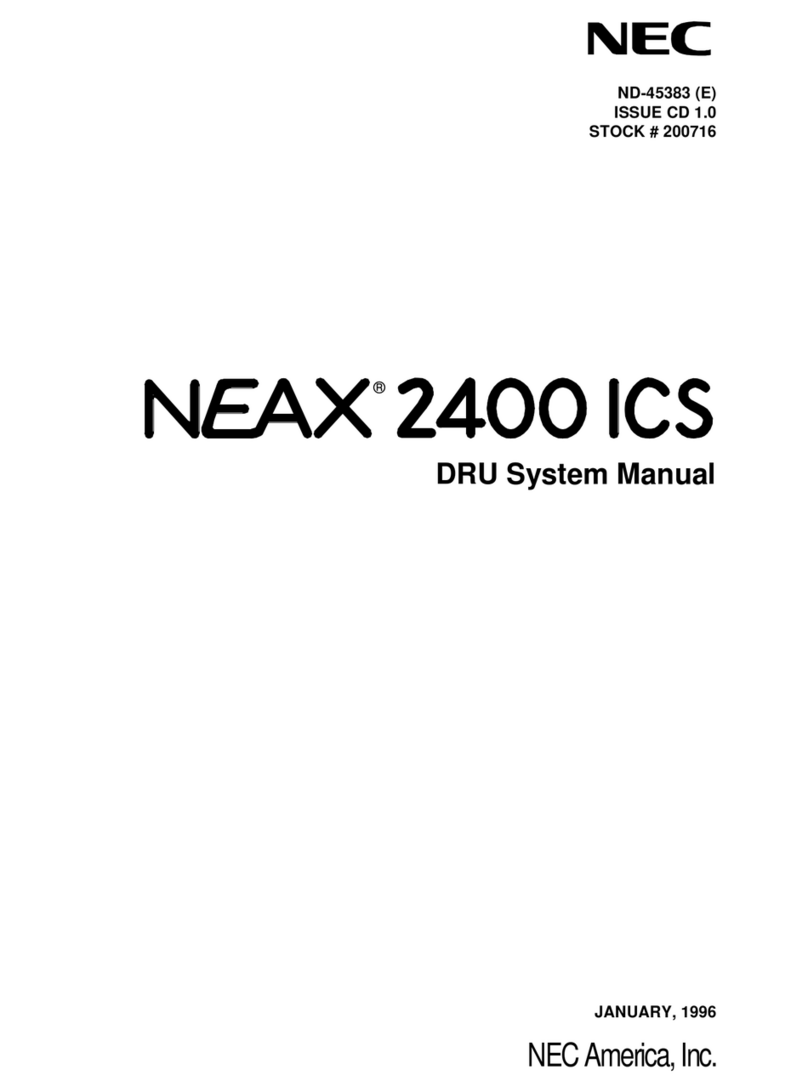
NEC
NEC NEAX 2400 ICS manual
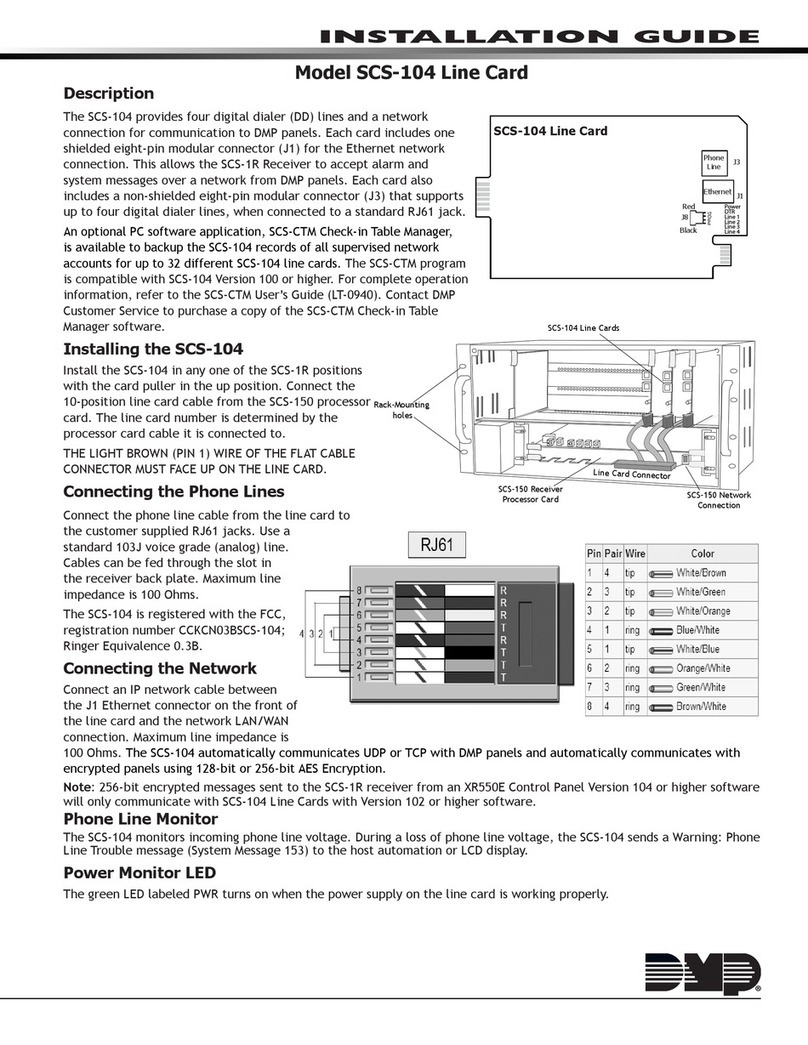
DMP Electronics
DMP Electronics SCS-104 installation guide

MALA GeoScience
MALA GeoScience RAMAC X3M Hardware manual
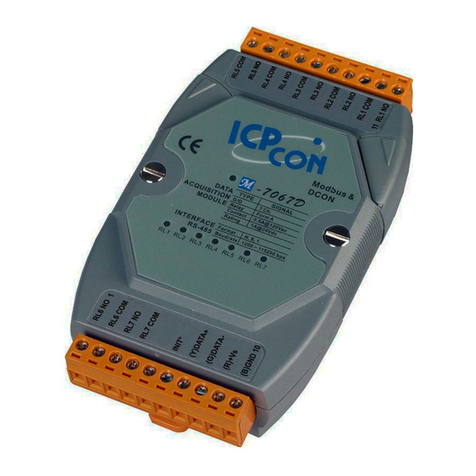
ICP DAS USA
ICP DAS USA M-7067D quick start guide
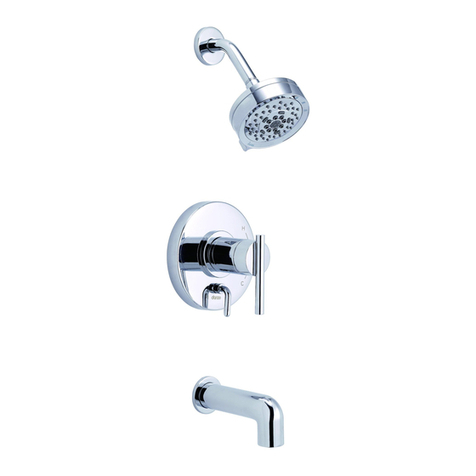
Danze
Danze Treysta D511058TC installation instructions
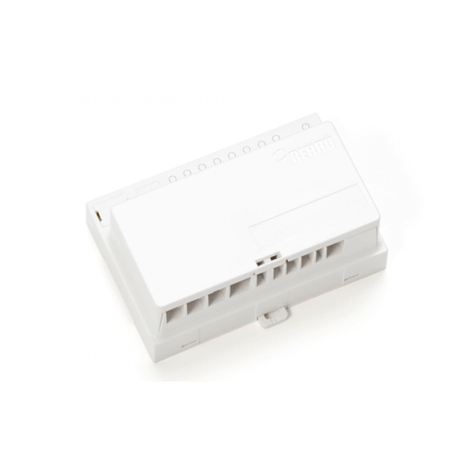
Rehau
Rehau NEA SMART 2.0 Quick install
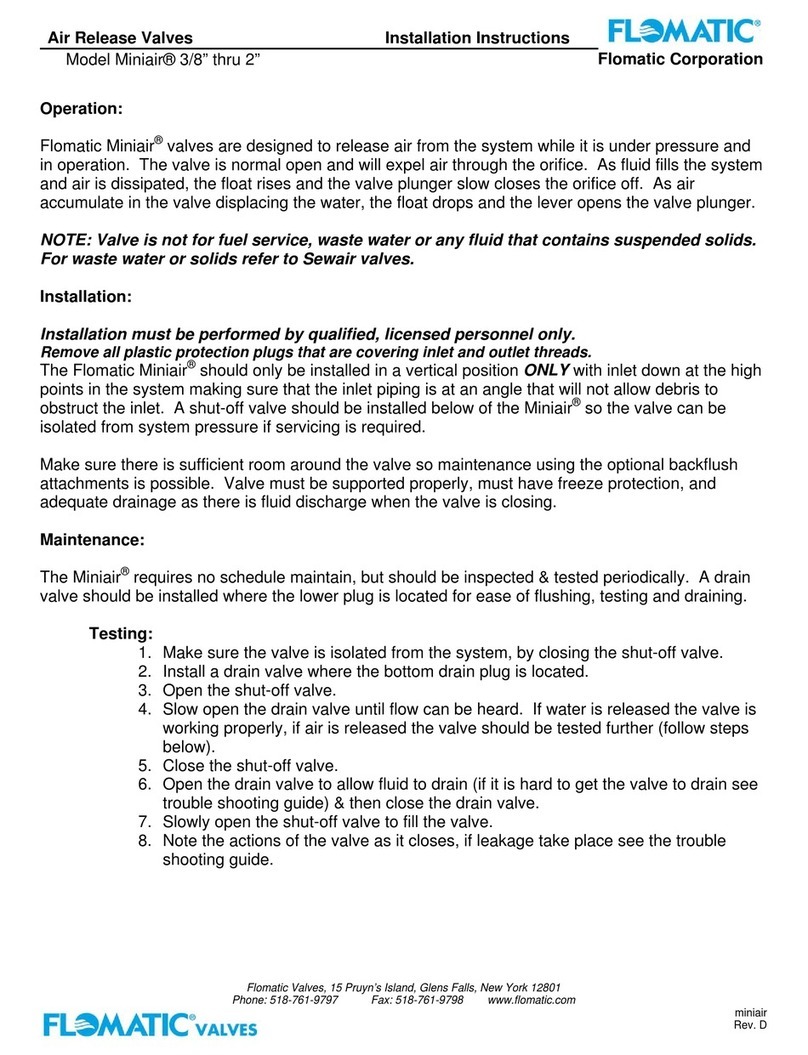
Flomatic
Flomatic Miniair installation instructions
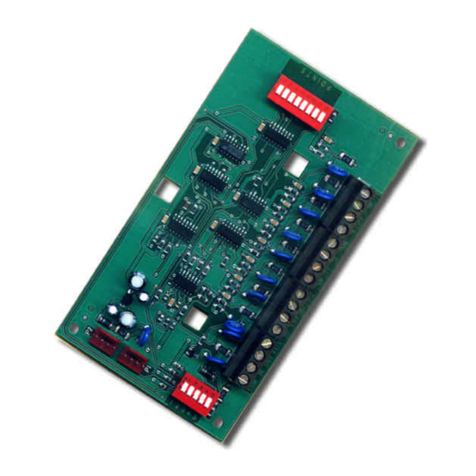
Radionics
Radionics D8128D installation instructions
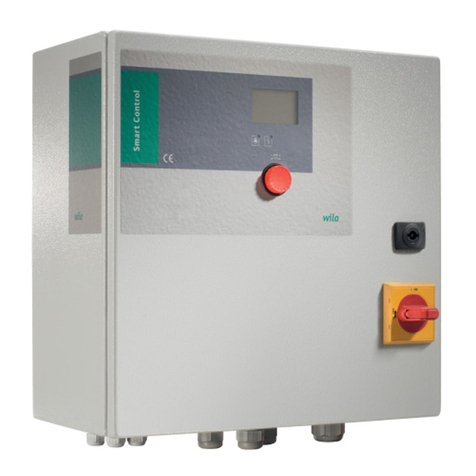
Wilo
Wilo Control SC-L Installation and operating instructions
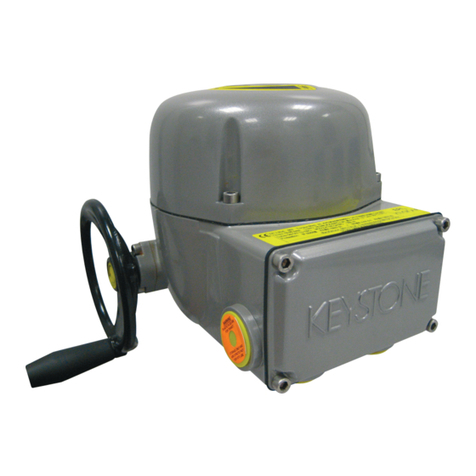
Emerson
Emerson Keystone EPI2 Installation, operation and maintenance manual
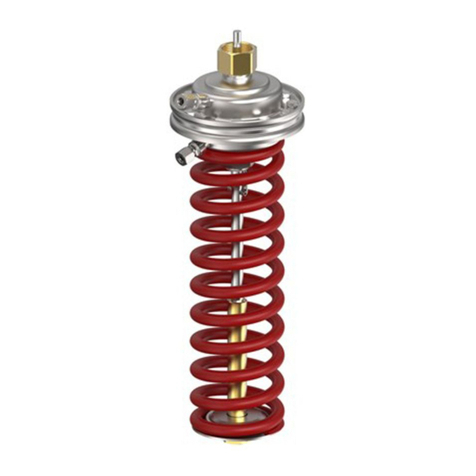
Danfoss
Danfoss PCV-VFGS 2 DN 150-250 installation guide
